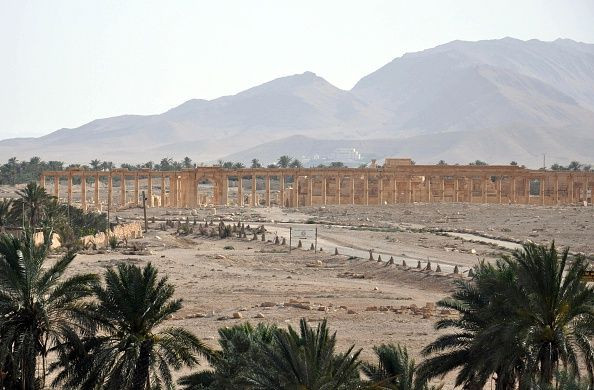ISIS Seizes Palmyra, Launches Prison Break At Ancient Syrian UNESCO Site; Islamic State Group Took Control Of Key City Of Ramadi Days Ago

The Islamic State group seized Palmyra, one of Syria’s most ancient cities on Wednesday, after days of fighting Syrian army forces outside the gates of the UNESCO world heritage site. Palmyra is home to roughly 50,000 residents; Its 2,000-year-old colonnades make up “one of the most important cultural centres of the ancient world,” according to UNESCO.
“It’s bad today,” Khalil al-Hariri, the Palmyra museum’s director, told the New York Times.
The militant group also known as ISIS took control of Palmyra, located in an oasis northeast of Syrian capital Damascus, just days after its fighters in Iraq seized Ramadi, a Sunni city roughly 68 miles from Baghdad. Both military gains are significant for ISIS because in each case, militants were able to seize territory where the respective armies were actively trying to push them back.
After having seized Palmyra, ISIS controls 40 percent of Syria and the majority of its oil resources. What’s more, it has increased its supply routes, now with a direct line to President Bashar Assad’s stronghold and Damascus. “The Islamic State organisation has now established almost complete control over the area from Palmyra to the Syrian-Iraqi border and onwards to the Syrian-Jordanian frontier,” Rami Abdul Rahman, director of the Syrian Observatory For Human Rights, told The Guardian.
Palmyra is also home to Tadmur Prison, which the Guardian called a “symbol of state repression.” Several thousand Syrians have been incarcerated in the state-run jail for prison -- most of them for opposing Assad's regime. On Wednesday night, ISIS reportedly broke open the prison. When ISIS carried out a prison break in Ramadi days ago, many of the incarcerated were then welcomed into the group. The whereabouts of Tadmur’s prisoners are not yet known.
ISIS began its advance toward Palmyra last week and by Monday militants were battling forces loyal to President Assad less than a mile from the city gates. In a strategy similar to the group’s operation in Ramadi, ISIS relied heavily on suicide bombers to infiltrate the city.
Palmyra is just one of the several ancient sites and world heritage ruins that ISIS has seized across Syria and Iraq since it crossed the border between the two countries last June. One of the group’s major sources of income comes from looting ancient sites and then selling the antiquities on the black market. When it has removed all valuable items from a site, ISIS militants usually have destroyed the remaining ruins.
In Iraq, ISIS destroyed the ancient Assyrian city of Nimrud, the Iraq Museum and Persian ruins at Hatra, and, last week, the militants reportedly blew up the 200-year-old Maryam Khatoon Mosque outside their Iraqi stronghold Mosul.
"I am terrified," Maamoun Abdulkarim, Syria's director-general of antiquities and museums, told Radio Free Europe/Radio Liberty. "This is a PR battle for Daesh [ISIS] and they will insist on scoring victory against civilization by destroying [Palmyra]."
© Copyright IBTimes 2025. All rights reserved.






















